Inspired by the local fishing tradition of bateas, the winning project of TAC! Urban Architecture Festival for Vigo is part of the reflection proposed for this third edition: the regeneration of urban centers from a local, small-scale, and sustainable perspective.
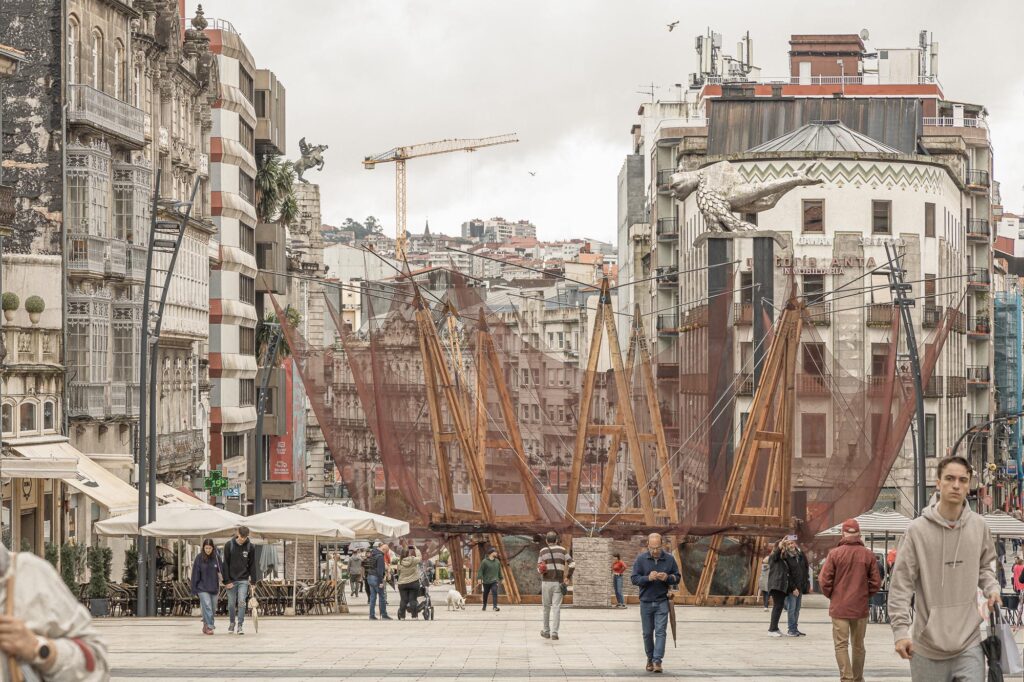
The Ministry of Housing and Urban Agenda (MIVAU) and the Arquia Foundation, in collaboration with the Concello de Vigo and supported by the Official College of Architects of Galicia, have presented the temporary pavilion ¡Qué faena(r)!, by architects Óscar Cruz García and Pablo Paradinas Sastre at Porta do Sol in Vigo. The project demonstrates the capacity of architecture to connect territories, people, and practices, being the best example to advocate for local trades and traditions in a contemporary way.
Practical info
« ¡Qué faena(r)! » pavilion by Óscar Cruz García and Pablo Paradinas
June 13 – July 14, 2024
TAC! Urban Architecture Festival
Praza Porta do Sol, Vigo
Spain
Until July 14th, various public activities will be part of the cultural program of an event that combines young practice, innovation, and experimentation, and which will continue in San Fernando (Cádiz), from September 23rd to October 14th. The festival, which connects young talent, experimentation, and public space, starts with the inauguration of the temporary pavilion ¡Qué faena(r)!, by architects Óscar Cruz García and Pablo Paradinas Sastre, and will be on display until July 14th at Porta do Sol in Vigo, the first of the two venues for the event.
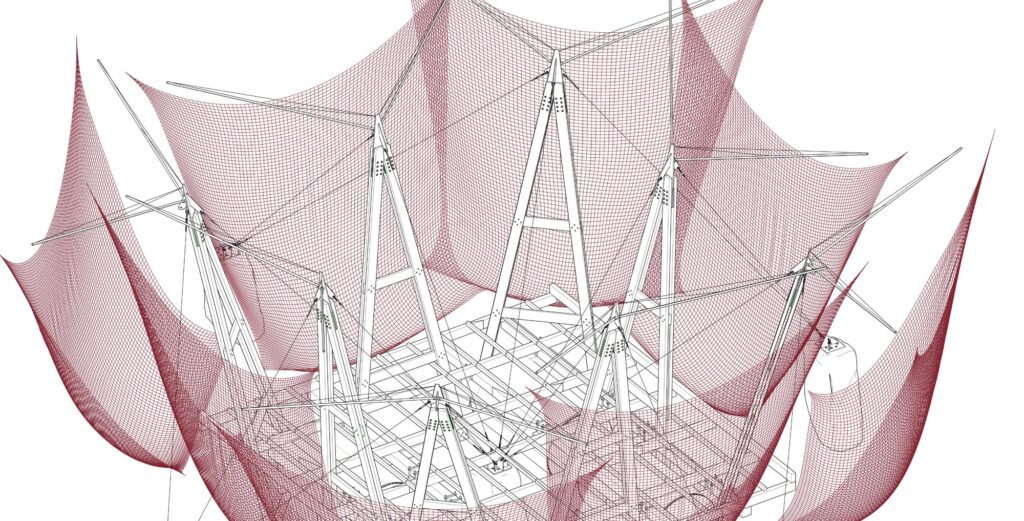

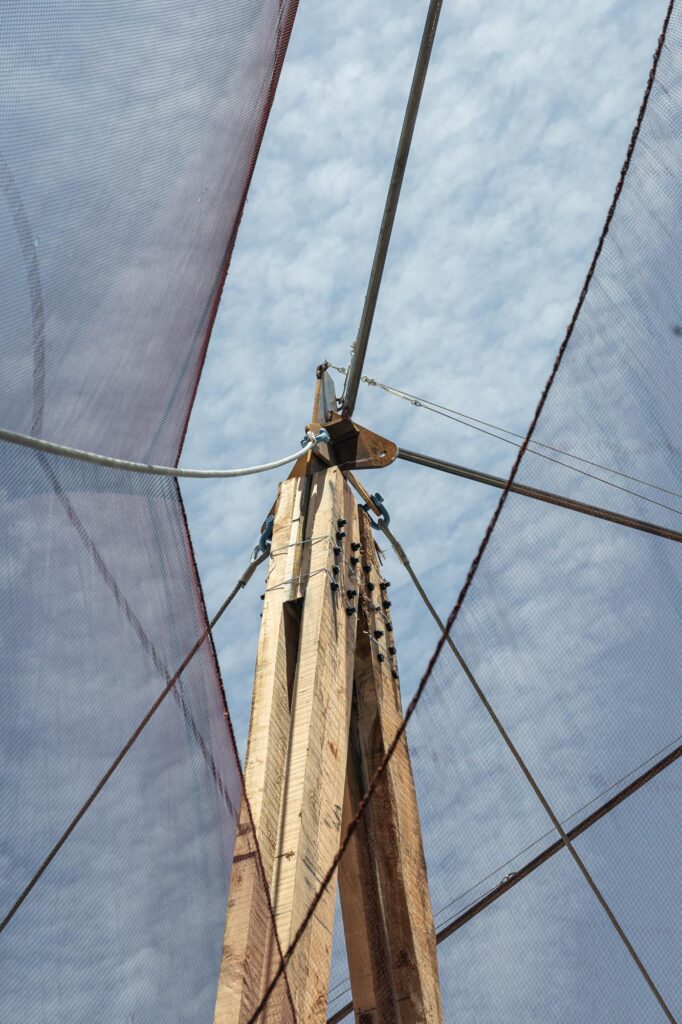
With the reflection on the regeneration of urban centers as the theme of this new edition of TAC!, ¡Qué faena(r)! involves local artisans and sustainable industries in its construction. The project, selected in a public call that received a record number of 127 proposals, proposes an encounter between nature and artifice, tradition and mediation through the structure of the batea—a wooden platform placed in the sea for shellfish farming, one of the most closely linked tasks to the local economy of the region—combined with a net-shaped cover that alludes to the traditional fishing system as a call and shelter for activities.
Rethinking public space from proximity
After two editions in the cities of Granada, Valencia, and San Sebastián, TAC! will transform the central Porta do Sol in Vigo, considered the zero kilometer of the city, into a meeting point for citizens through various activities and proposals until July 14th. The festival will extend its reflection to the city of San Fernando (Cádiz) from September 23rd to October 14th with the construction of the second winning temporary pavilion of the edition: La Sal, by José Rodríguez and Carlos Montes González.

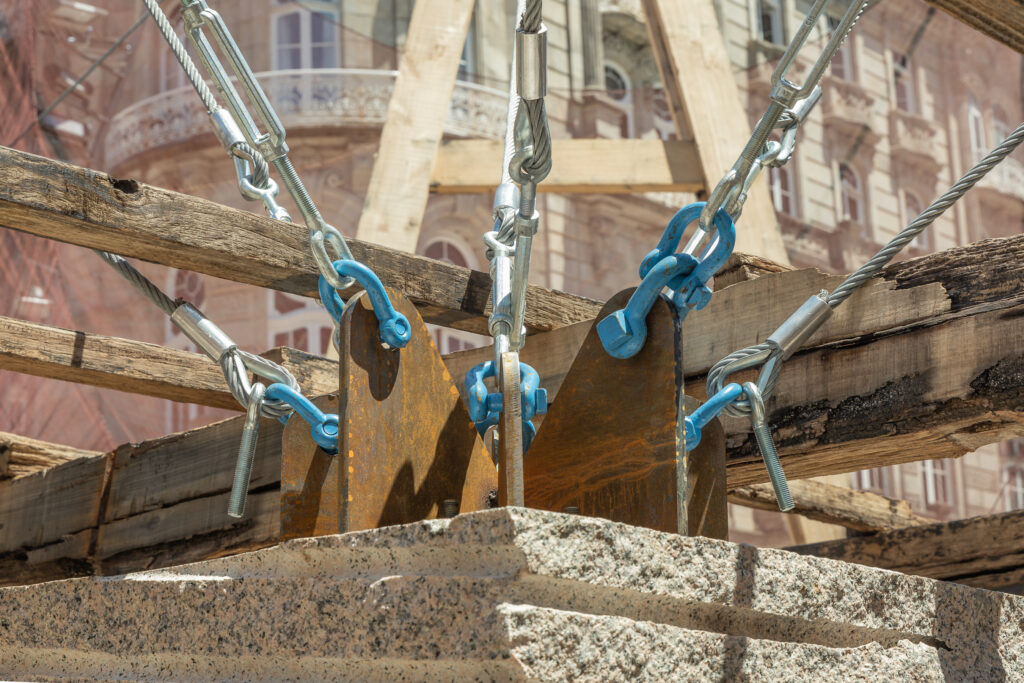
Inspired by the historical and cultural heritage of both regions and their patrimonial and identity interests, both proposals bring to central city locations the reflection on the transformations of the territory and the urban, as well as their transformation through elements related to their traditional economy.
An emphasis on a change in architecture towards small-scale constructions, proximity, and the generation of domestic environments for the community that integrate into the existing urbanism and respond to climate issues. Thus, TAC! 2024 edition places greater attention on creating sustainable environments at the local level, as well as promoting initiatives that strengthen community ties and improve citizens’ daily lives.
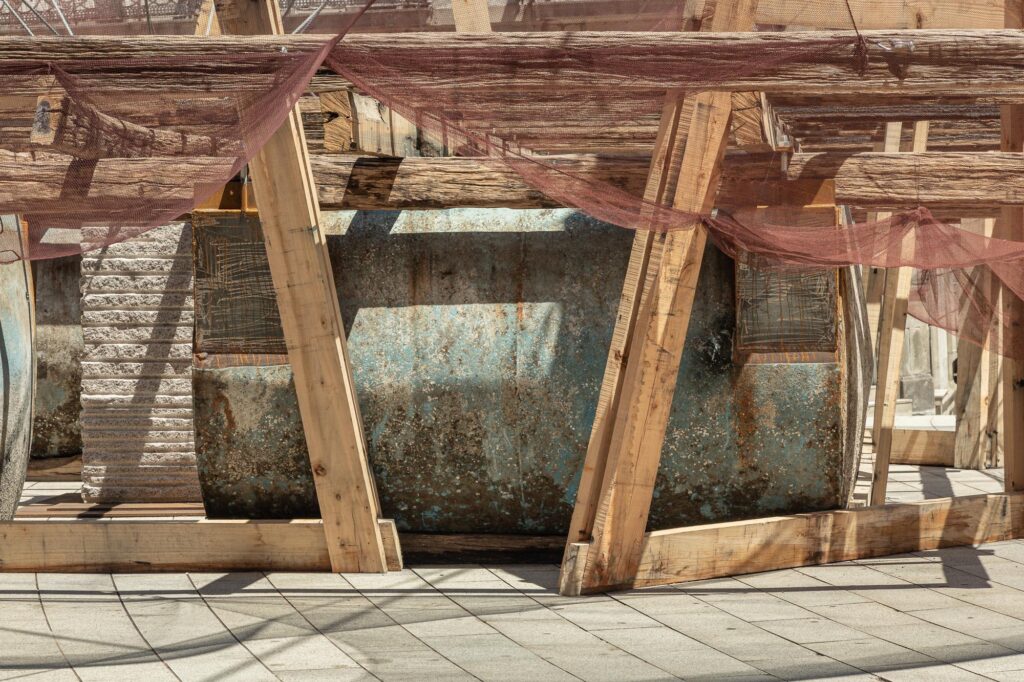
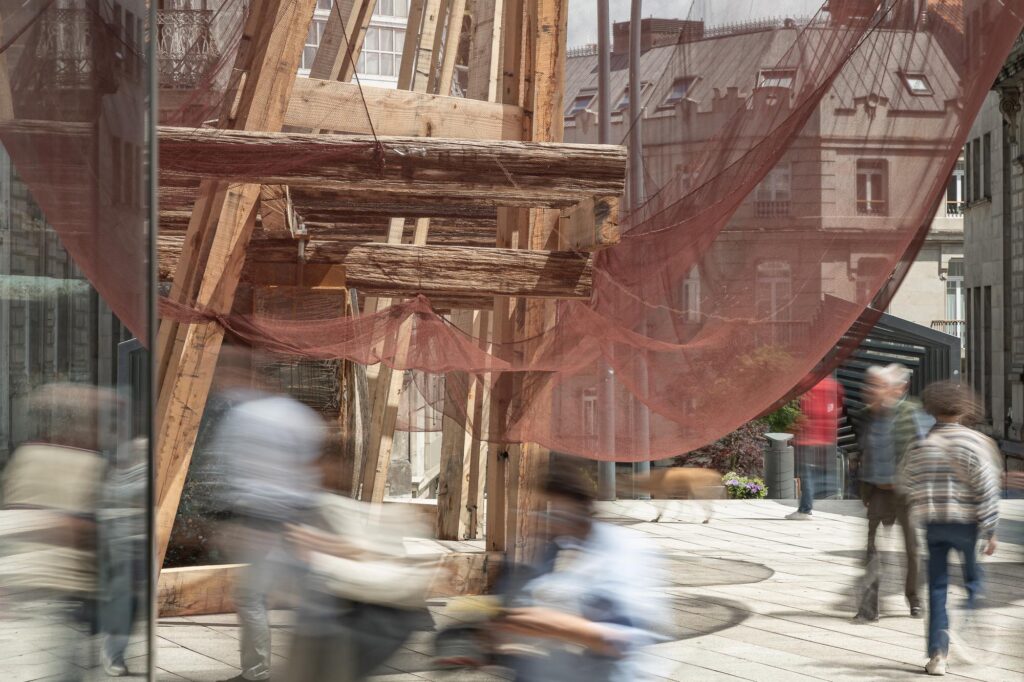
The local tradition as a driver for new architectural practices
¡Que faena(r)!, by Madrid-based architects Óscar Cruz García and Pablo Paradinas Sastre, demonstrates architecture’s ability to connect territories, people, and practices through a proposal that advocates for trades and local tradition in a contemporary way.
Understanding ‘faenar’ as ‘something to be done’, the pavilion’s name speaks to its functionality: the pavilion consists of a structure that represents a batea and its use as a platform in the sea for shellfish farming, one of the most common tasks or faenas in the locality of Vigo. Alongside it, a cover that alludes to the traditional fishing system.
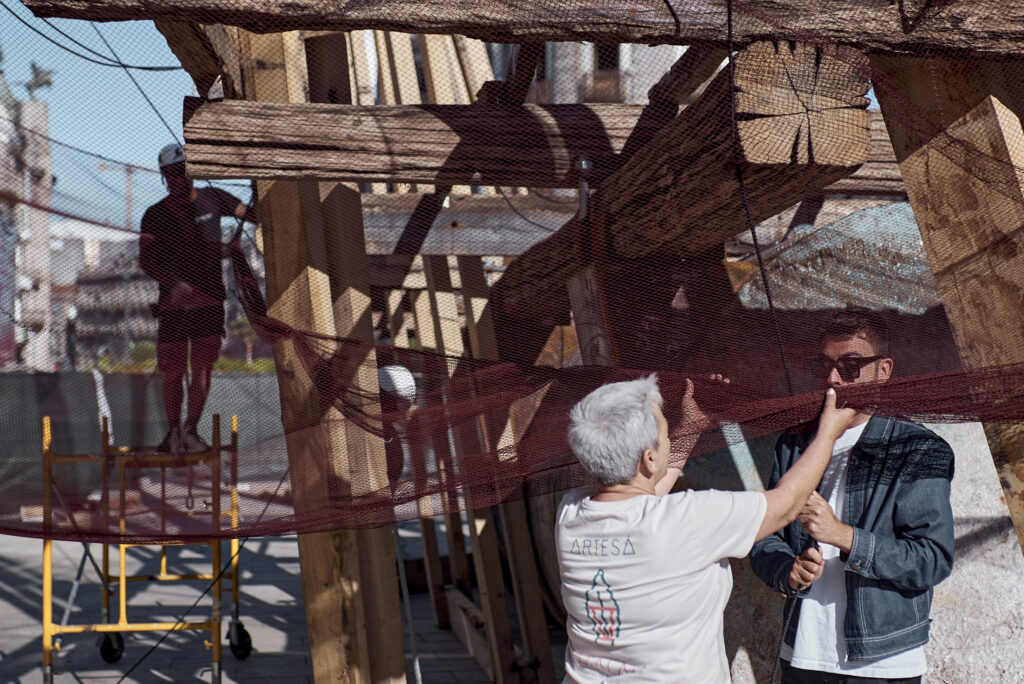
Additionally, the space reserved under the batea comprises a rectangle with a pink granite block; a natural fragment of geological history and a reminder of the eternal dialogue between land and sea, between gravity and wind.
Highlighted by the festival jury as “a project of architectural quality that allows the versatility of space use, in addition to being based on the principles of circular economy, proximity, and the use of sustainable materials with minimal impact to reduce the ecological footprint”, ¡Qué faena(r)! starts from the reuse of materials considered waste and involves local producers. Fishing nets, rusty drums, reclaimed batea wood, and granite blocks enjoy a ‘second chance’ after fulfilling their mission in the sea.

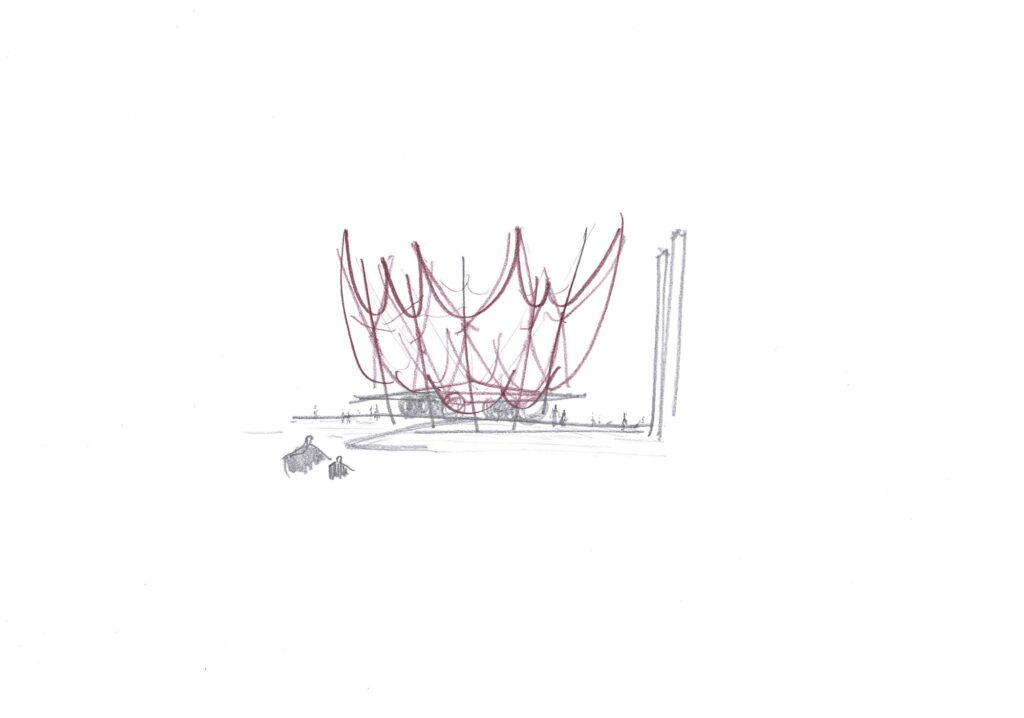
Thus, the carpentry team Fran Millán and Frouma Atlantic Wood, a company specializing in the manufacture of sustainable furniture with batea wood, were responsible for building the platform with wood from the bateas. A collaboration between artisans and architects is joined by Galician designer Amalia Puga, along with the “Atalaia” network association of A Guarda (women dedicated to making and repairing fishing nets), who crafted the pavilion’s net cover.
A program of activities turns TAC! into a meeting point
An exhibition at the Official College of Architects of Galicia (COAG) will showcase until July 14th a selection of outstanding projects submitted to this edition’s 2024 ideas competition. The exhibition demonstrates the quality of Spanish architecture and the enormous talent of young professionals in our country.
Additionally, the pavilion will host a comprehensive program of public, free-entry activities, organized together with the Concello de Vigo, aimed at promoting local culture, historical heritage, and architecture with the winning construction ¡Qué faena(r)! as a meeting point.


Various proposals around sports, music, historical heritage, social welfare, tourism, commerce, youth, and equality will be part of the festival and its program, already available on the TAC! website www.tacfestival.com.
Furthermore, to promote proximity and sustainable architecture, once the festival is over, ¡Qué faena(r)! plans to move the pavilion to Praia do Cocho as a recreational platform to extend its useful life, as well as to carry out the recirculation of its materials to contribute to the recycling of often abandoned fishing gear in the seabed.
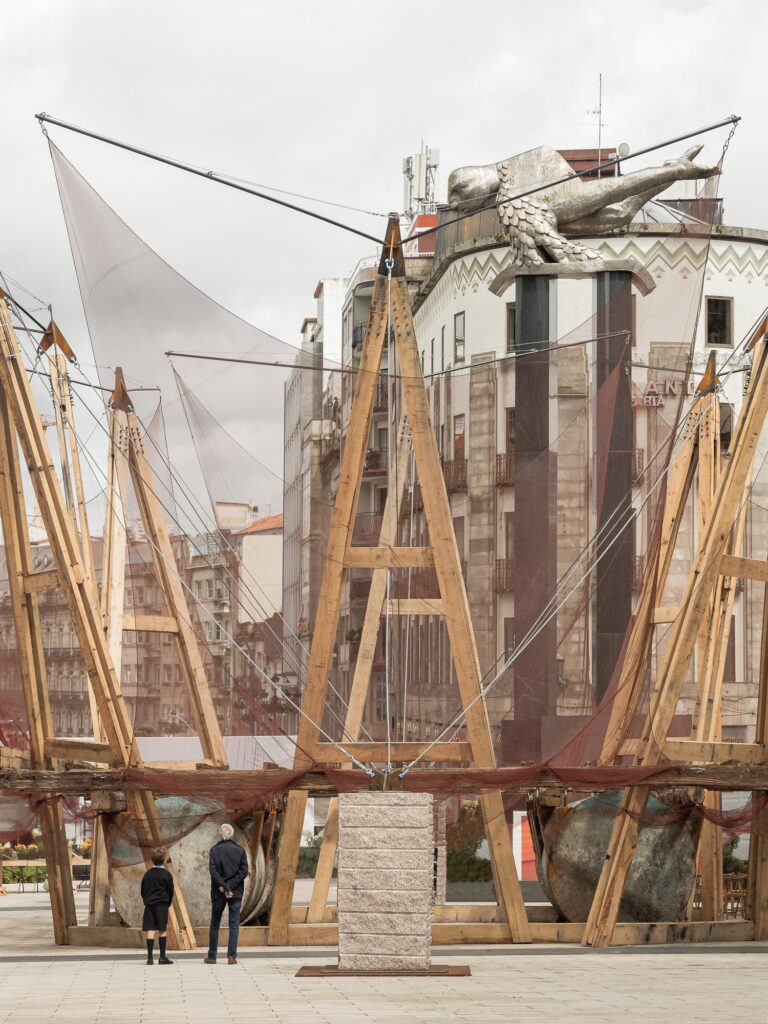

According to the creators, ¡Qué faena(r)!, “studies the vernacular from the tradition applied to a territory believed to be consolidated” and, on the other hand, “establishes a dialogue with new architectural practices as the main driver of change in a public space with new topographic, climatic, social, economic, demographic, and productive conditions”. Likewise, “the proposal aims to remove the negative connotation of the term faena(r) by resignifying the invisible and deconstructing relationships between o Mar de fora (territory) and o Mar de dentro (urban), starting from nature and its artifice, exploring the limitations of the medium as language and its relationship with memory and the optimistic message of reality.”
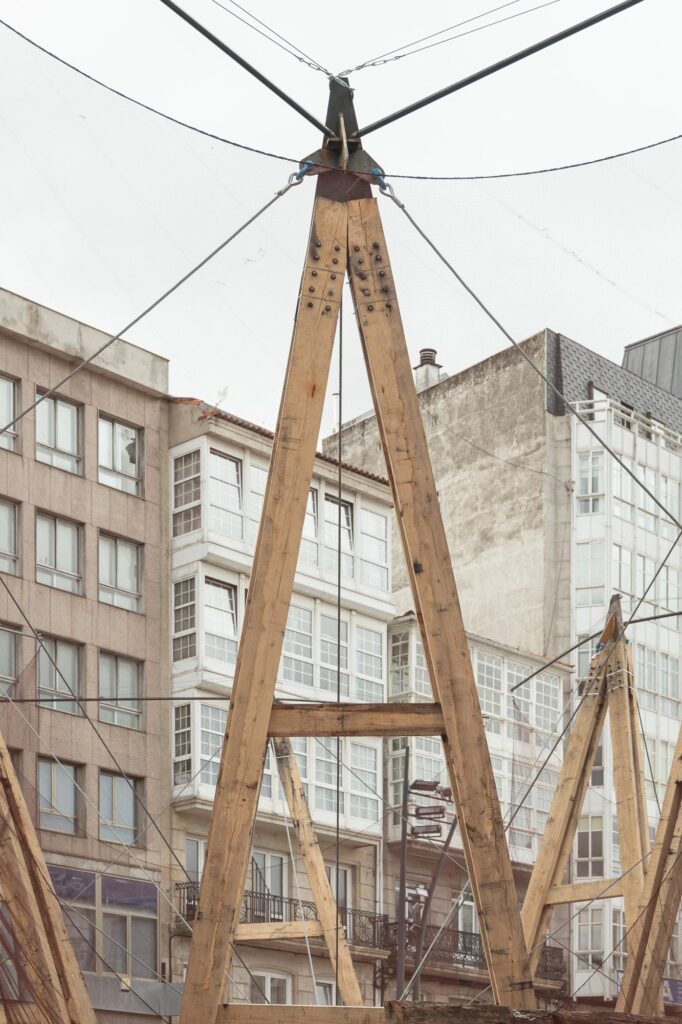
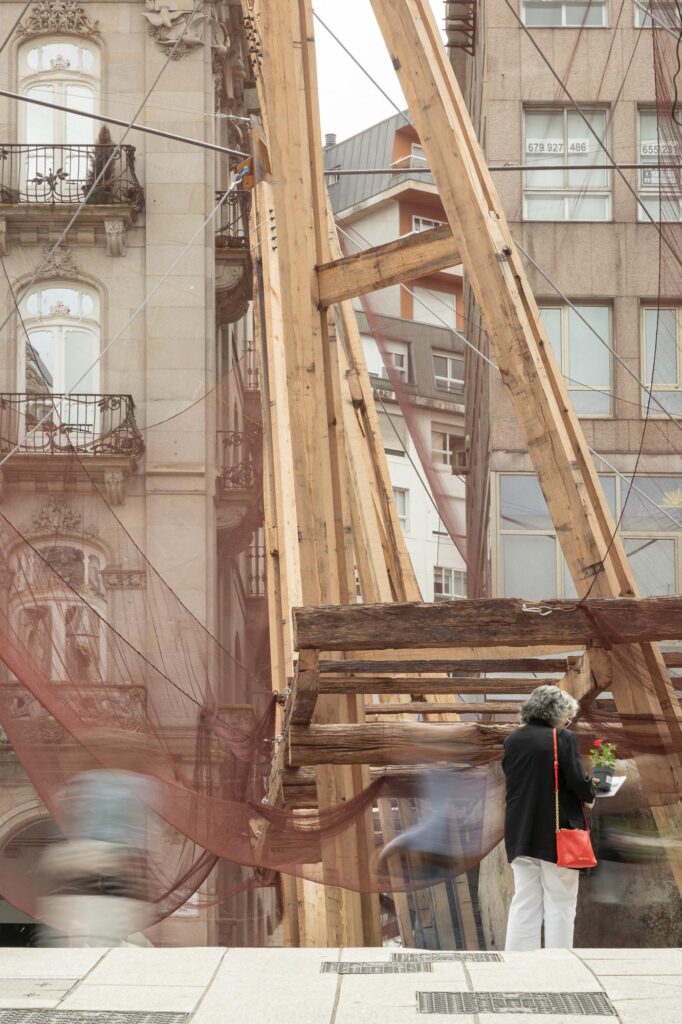
Winning Project ¡Qué Faena(r)!
The proposal connects both « seas » on land through a pavilion built with two recognizable elements, the Galician batea as the main structure, and the traditional fishing system in its cover as a call and shelter for activities under the structure.
In Galicia, there is « the Sea within and the Sea outside ». The first translates to the calm that comes with arriving home; the second, unlimited in extension and dangerous in condition but of great beauty, is the place everyone wishes to return from.
To address how architecture will be the tool for social transformation in public spaces, the proposal recreates the transformation of the territory through the interaction between nature and artifice by means of a recognizable element: the batea. A selection of an extractive typological specimen and its landscape under the understanding of the cultural role.
Fishing nets, rusty barrels, reclaimed wood, and granite blocks become materials to create a second chance for elements already considered waste.

